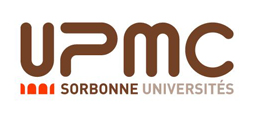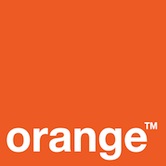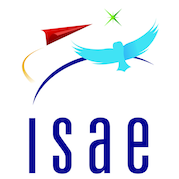Programme
| Lun 13/05 | Mar 14/05 | Mer 15/05 | Jeu 16/05 | Ven 17/05 |
Download Rescom2013 pocket program
Lundi 13 mai
From a content focus to an information-centric world – The PURSUIT approach (Dirk Trossen, Cambridge University, UK)
Content and its effective delivery has become the main engineering focus in today's Internet with content delivery networks (CDNs) attempting to boost the abilities of the Internet to cope with bulk delivery of content. Information-centric Networking (ICN) has been touted as an alternative approach to delivery of content. What if, however, ICN becomes more than content? What if assumed a move from largely governed content, published into the network by a rather small group of large content providers, to information that can be published by anybody at anytime from anywhere? What are the ramifications on the design if such view of the world holds? We explore these questions in this tutorial, laying out the assumptions more clearly and stating the starting points for a design that accommodates information dissemination at scale. The tutorial will see the presentation of concrete solutions in rendezvous, traffic engineering and stateless forwarding that have been developed in the FP7 PURSUIT project. We will also show demonstrations through our development platform Blackadder, providing insight into how solutions in ICN can be developed and tested.
Download presentation slides.
Mardi 14 mai
From host-based networking to Information-Centric Networking: the Content-Centric Networking architecture and its opportunities (Bruno Kauffmann, Orange Labs, France)
The Internet was born on the foundation of the Public Switched Telephone Network and allowed connecting two end-hosts. This host-based approach corresponded to the main network usage: phone, and then client-server services (e.g. Telnet, FTP, and SMTP). Starting from the 90s, the development of the web, peer-to-peer networks and then streaming services shifted the main Internet usage towards content distribution, where end-users are not interested in getting connected to a specific server or end-host, but to receive a specific piece of content, which is often served to many users.
Content-Centric Networking (CCN) is a new network architecture, which is optimized towards content delivery.
This tutorial will present the whole CCN architecture, and the inherent features that it provides, such as multicast, caching, content security, as well as recent works in the area and the main current open questions raised by this new paradigm.
Download presentation slides.
Caching in Information-Centric Networks (Gwendal Simon, Telecom Bretagne, France
One of the objectives of Information Centric Networking (ICN) is to enable the exploitation of the caching resources of new generation of routers (Content Routers or CR). In the seminal work from V. Jacobson, a basic Least Recently Used (LRU) strategy implemented on every CR has been proposed. Since 2010, the research community has extensively studied the performances of a "network of loosely-administered small caches". More generally, recent works have highlighted that the research community lacks methods for analyzing and evaluating caching policies in generic multi-cache topologies. In this talk, we will present some recent works in this direction, as well as some of the open problems related to cache management in Information centric networks.
Download presentation slides.
Mercredi 15 mai
On the design of architectures and algorithms to support content-oriented functionalities in high speed network equipments (Diego Perino, Alcatel-Lucent, France)
The integration of content oriented functionalities in network equipments is of critical importance for the deployment of future content delivery infrastructures. However, as today’s high-speed network equipments are mostly designed to carry traffic from one location of the network to another by means of IP address information, this integration imposes severe changes to hardware and software technologies. In this talk we focus on system design and evaluation of the basic building blocks enabling content-oriented communication primitives in network equipments. First, we overview hardware platforms used today to realize high-speed equipments and most significant technological constraints. Then, we present challenges and solutions to support name-based forwarding, packet-level storage management and content-based temporary state at high speed. Finally, we briefly introduce our on-going work on the implementation of our solutions on high-speed hardware and software platforms, and on the evolution of our designs to support enhanced content-oriented mechanisms.
Download presentation slides.
NDN for Vehicular Networks (Giovanni Pau, UPMC, France)
In near future, a car will be equipped with a variety of wireless interfaces such
as 3G/LTE, WiMAX, WiFi, or DSRC/WAVE. The vision is to enable vehicles
to communicate with each other and with the infrastructure over any and all
physical communication channels, as soon as any channel comes into existence
and as long as it is available. Today, in reality by and large vehicles are
connected only through cellular networks to centralized servers. Many years of
research in VANETs and delay tolerant networking are still far from completion
and less likely to deploy. The root cause of this problem in networking vehicles
is IP's communication model. IP creates its own addressing space, assigns
IP addresses to every communicating end point, and then encapsulates each
piece of application data into an IP packet thus insulating applications from data
delivery layer.
In this talk we will introduce the named-data networking (NDN) paradigm as the
starting point, for the design and development of a single VANET framework able
to exploit VANETs’ dynamic partitioning nature.
NDN identifies named data as the focal point in communication. NDN lets
individual nodes to request the desired data using application data names
directly. This enables data to exist in the absence of connectivity, and to be
exchanged over any physical connectivity once it comes into existence.
Download presentation slides.
A Dive Into ccnSim: A fast and scalable content centric simulator (Giuseppe Rossini, Telecom ParisTech, France)
ccnSim is an highly scalable CCN simulator. It is entirely written in C++, and is distributed like an Omnet++ package. It is thought for simulating large and realistic content oriented scenarios, in terms of both topologies, networks, cache size, and so forth. After giving a brief overview about ccnSim internals, this talk proceeds in two different directions: first, we show, from a merely user perspective, how to set up a (basic) simulation scenario and producing the results. Second, we provide examples for extending the tools in terms of caching algorithms, caching meta-algorithms, and forwarding strategies.
Download presentation slides.
ICN traffic control and network performance (James Roberts, INRIA, France)
Effective traffic control is crucial to the success of any new ICN architecture. It is essential for example to ensure low latency for conversational and streaming flows while realizing satisfactory bandwidth sharing between elastic flows. We discuss required mechanisms including receiver based congestion control and in router queue scheduling. ICN performance depends critically on the widespread use of caching. In a second part of the talk we discuss the advantageous memory - bandwidth tradeoff realized by caching chunks of content and how this tradeoff should impact network design. This entails consideration of the nature of content retrieval traffic in terms of catalogue size and popularity distributions. Our results suggest that simply to include content stores in routers may not be sufficient since caches need to be very large to be effective.
Download presentation slides.
Jeudi 16 mai
The Role of Content Delivery Networks in a Content-Centric Network (Bruce Maggs, Duke Univeristy/Akamai, USA)
Download presentation slides.
ICN and real-time constraints: what lies behind a display advertisement? (John Whitbeck Thomas Aynaud, Criteo, France)
Pioneered by Google, real time bidding (RTB) plaftorms are revolutionizing the way that online advertisements are displayed to web users. Indeed, a single advertisement may now trigger a worldwide auction leading to competing bids from dozens of advertisers, the highest bidder earning the right to display the advertisement of its choosing. This entire process must take place in less 500ms, so that no delay is perceptible by the user. In order to achieve near real-time performance at massive scale, the best bidders have deployed worldwide platforms spanning multiple datacenters that process petabytes of data. Information centric networking (ICN) techniques such as location-agnostic data retrieval, content prepositioning, and caching, are key enablers for scaling, fault-tolerance, and performance.
CCNx Experimentation over PlanetLab using NEPI (Alina Quereilhac, INRIA, France)
Realistic experimentation on top of Internet-like environments is key to evaluate the feasibility of world wide deployment of ICN solutions. However, deploying live experiments on the Internet is challenging since it involves dealing with a largely distributed and possibly unstable infrastructure. In this tutorial we will introduce the NEPI experiments management framework and show how it can be used to easily design and run CCNx experiments using the PlanetLab Europe platform. Among other features, NEPI enables the deployment of user modified sources on arbitrary PlanetLab nodes, and the creation of tunnels to enable the use of multicast FIB entries between CCNx daemons over the Internet.
Download presentation slides.
???????Vehicular NDN hands-on session (Giulio Grassi & Davide Pesavento, UCLA, USA)
Download presentation slides.
CCNx Emulation using ns-3 (Daniel Camara, INRIA, France)
Given the high quality of existent ICN implementations, e.g. CCNx and OpenNetInf, it is relatively easy to modify such implementations to experiment new ideas. However, the validation of such implementation is less evident, create a large enough ICN deployment is problematic. One possible solution is to create a set of virtual machines and use an hybrid virtualization/simulation approache. This tutorial will show how to use Direct Code Execution (DCE), on top of the ns-3 network simulator, to perform large scale ICN validations. DCE is a virtualization tool capable to run unmodified code of CCNx (or other code) over real and simulated network stacks. This emulation scenario grants the best trade-off possible for researchers, since it allows: (i) a fine grain control over the experiment, (ii) easily configurable and modifiable setups, and, (iii), the simulation of fairly big topologies using real and simulated network stacks implementations, (iv) the possibility to conduct reproducible tests with complex network behaviors. This tutorial will give the attendees a broad view of network simulations/emulations, DCE and ns-3. After watching this tutorial the attendees should be able to easily perform realistic ICN experimentations running CCNx over DCE/ns-3, define new user mode and kernel mode DCE simulations and collect the data from their experiments.
Download presentation slides.
Vendredi 17 mai
Management of Content-Centric Networking (Thibault Cholez & Thomas Silverston, LORIA, France)
Download presentation slides 1. Download presentation slides 2.
Economic issues of Information-Centric Networking (George Kesidis, The Pennsylvania State University, US)
The Internet is a vast communication infrastructure spanning distributed name-resolution and routing systems for the public-commodity IPv4 address space. Many and diverse content and service providers have converged upon the Internet to quickly and cheaply access their customers. As many players in this marketplace are both content/service and access providers (or are effectively so as a result of partnerships), network neutrality regulations have been enacted in several Western countries ostensibly to ensure fair access and promote innovation by third-party content/service providers, while being sensitive to the enormous build-out and maintenance costs of the major Internet-access providers, most of whom in the West also are private for-profit corporations. Obviously, any future evolution of the Internet to an information-centric networking (ICN) architecture will depend on both technological and economic forces affecting these players and their consumers.
In this talk, we first give an overview of the Internet's network-neutrality debate and illustrate some of the specific issues involved, e.g., content to access provider side-payments and the role of content caching by an access provider. We will employ simple game-theoretic models for this purpose. We are particularly interested in the role of differential quality-of-service management and its implications. A variation of the Internet model will be explained for the ICN setting, and comparisons will be made.
Significant portions of this talk will be drawn from prior work of the speaker in collaboration with E. Altman, S. Fdida, T.-M. Phat, and their students.
Download presentation slides.







